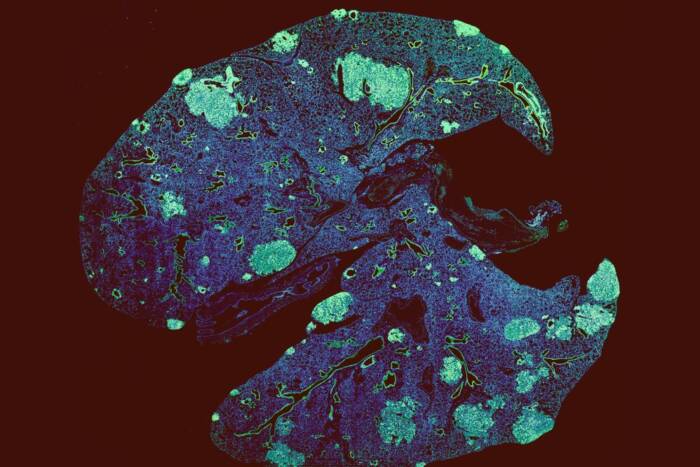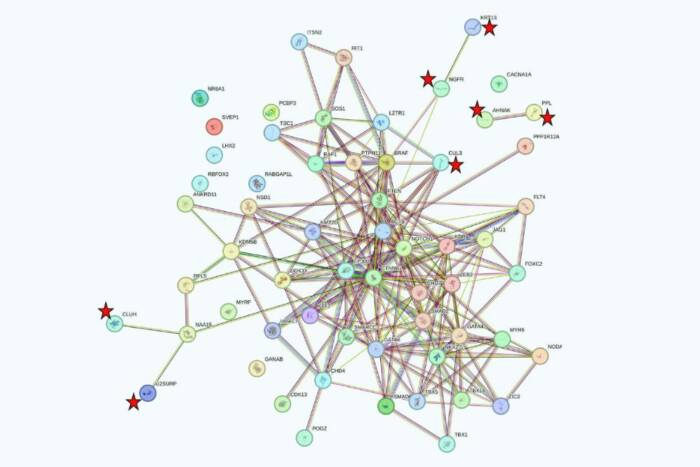Neuroscientist Vanessa Ruta promoted to associate professor

Vanessa Ruta
Animals, from flies to humans, can be fickle. Take responses to odor. A waft of a single scent can attract or repulse, all depending on the sniffer’s experience and what else is going on at the time. Neuroscientist Vanessa Ruta, who explores how brains produce such flexible responses to fixed stimuli, has been promoted to Gabrielle H. Reem and Herbert J. Kayden associate professor.
Ruta uses the relatively simple nervous system of the fruit fly—specifically the brain center that interprets odor—to examine processes similar to those in the more complex brains of mammals, including ours.
“My lab examines how flexibility is engineered into the nervous system, within molecules and circuitry, to give rise to adaptive behavior, at the level of both individuals and species,” says Ruta.
To tease apart these mechanisms, her lab uses a variety of approaches, from biochemistry to behavior, including a new odor-based virtual reality system that allows researchers to watch neural activity while a fly moves about.
“Vanessa’s work tackles a question central to neuroscience: How does the brain use sensory information to determine a course of action?” says Richard P. Lifton, the university’s president. “Her technically adept, intellectually rigorous examinations of olfactory processing in the fly are generating fundamental new insights on the means by which nervous systems, including ours, produce both flexible and hard-wired behavior.”
Making sense of smell
Before it can decide upon a course of action, an animal’s brain must first represent the information it receives. Since that animal has the potential to encounter a vast number of odors or other stimuli, scientists had theorized that the brain uses a random wiring strategy to maximize what it can encode. Ruta found evidence of this: when her group contributed to mapping incoming neural connections to the fly’s odor processing center, called the mushroom body, they found no discernible pattern. Each neuron’s connection to numerous odor inputs was random, an arrangement that allows it to best represent a rich diversity of olfactory experiences.
As with people, flies do not always respond the same way to a particular stimulus. Behavior varies across individuals and even within a single individual, which might respond to the same stimuli with different behaviors at different times. Ruta’s lab has explored the neural dynamics that set the stage for varying responses. Her work showed that the mushroom body’s outgoing signals are altered by the release of dopamine, a molecule neurons use to communicate. Dopamine signaling, in turn, may be affected by external stimuli from the environment, or by internal cues, such as whether the fly is active or at rest.
In mammals, including humans, dopamine serves as a signal for learning, priming the brain to record new information at important moments. It plays a similar role in flies, helping them to link a particular odor to a reward, for example. Mammalian dopamine neurons, like their counterparts in the fly, also encode movements and other actions as they occur, providing reinforcement that encourages an individual to continue with a beneficial activity, like eating or tracking the odors of food. Ruta’s lab is investigating how the same dopamine signal can contribute to the distinct processes of learning, motor control, and reinforcement.
A new reality
Her lab has also developed a platform that allows scientists to follow neural dynamics like these directly to their consequence: behavior. By adapting a virtual reality system used to study visual processing in the fly, Ruta’s lab has made it possible to watch what happens in a fly’s brain as it moves about in a natural response to an odor.
The virtual-reality olfactory environment allows individual flies to walk on a treadmill-like ball while a stream of air delivers an odor. Researchers are able to observe neural activity in the fly’s brain in response to those odors while also tracking the fly’s behavioral reaction to them. Ruta is using this platform to investigate the link between odor processing and navigation, among other things.
From species to structures
Sometimes changes to neural circuits occur more slowly, as when species evolve. Although they are closely related and found together, two species of Drosophila flies do not intermingle, and a pheromone emitted by a female of one species attracts males of the same species while repelling those from the other. To identify the changes responsible for these divergent reactions, Ruta and her colleagues are comparing how neural signals instigated by the pheromone propagate to the part of the males’ brains that initiates courtships.
Ruta’s lab has also begun examining the architecture of odor receptors for clues as to how insects have adapted to detect chemical cues within the myriad of environments they inhabit.
“Olfaction in insects, particularly flies, provides a powerful paradigm to examine how brains process sensory information and how this ability evolves,” Ruta says. “Because the logic of the fly circuitry parallels that of mammals, including humans, examining it will help us to better understand how our own brains function and adapt.”


